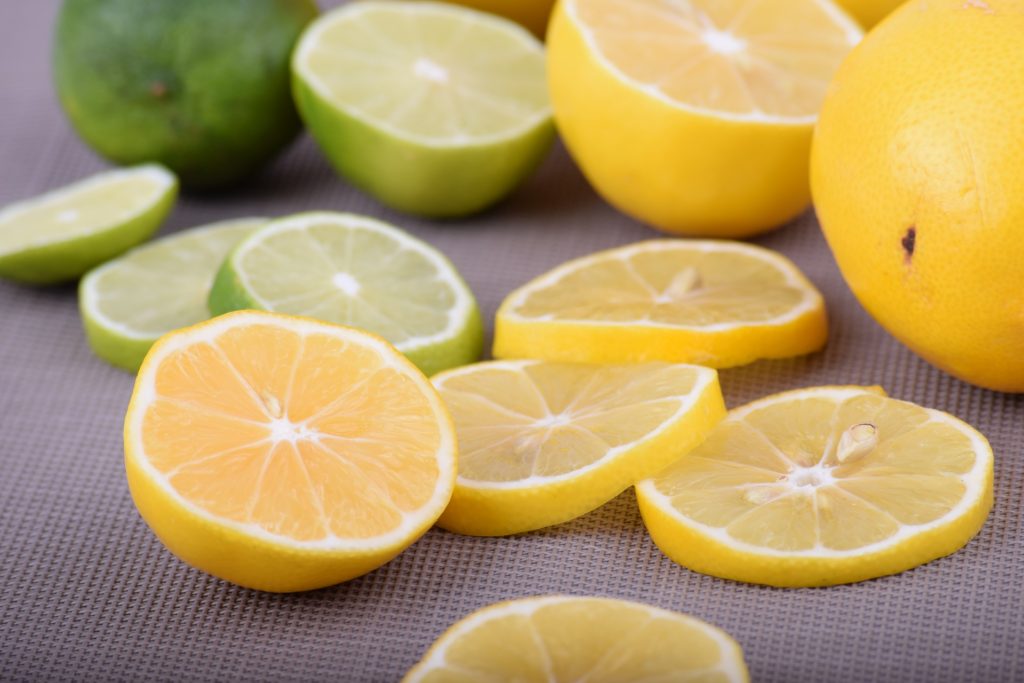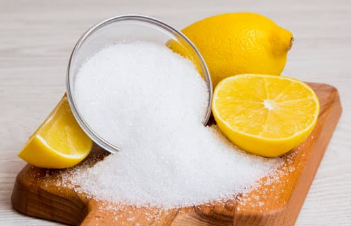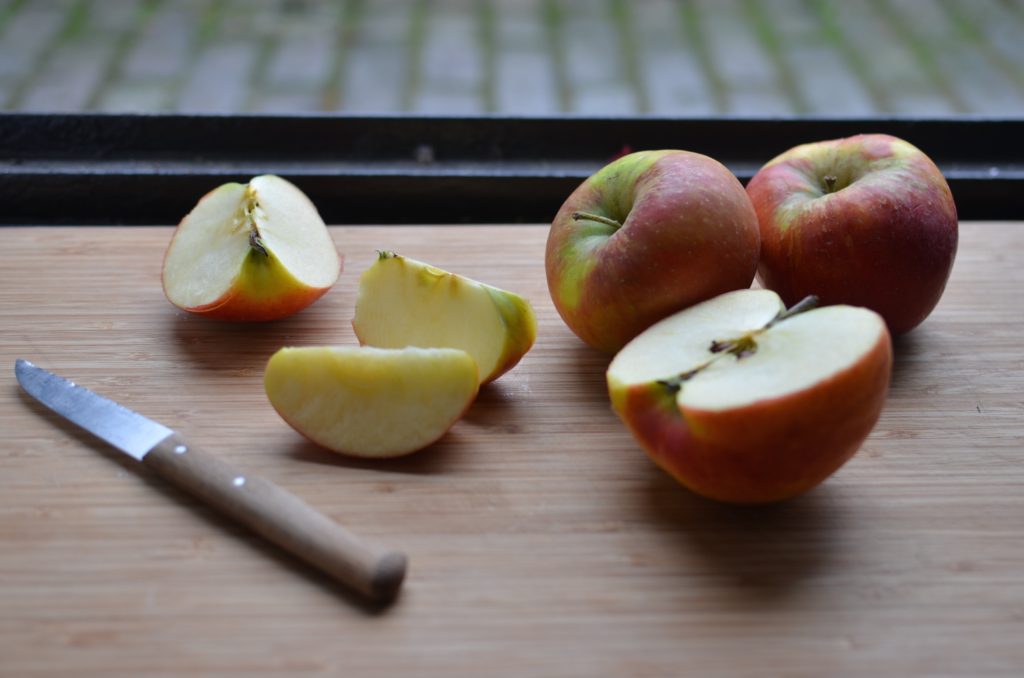
Citric acid, as a food additive, is one of the most important because of its several functions— as an acidulant, preservative, antioxidant, and stabilizer, to name a few. It also has similar uses in cosmetics, pharmaceutical, and cleaning agents manufacturing. Because of its acidic and sour taste, is it primarily used as a flavoring agent.
70% of global production of citric acid goes to the food manufacturing industry. Roughly half is used in beverage production. A naturally occurring acid in fruits, its ideal in fruit-based foods in which it intensifies the acidic fruity taste. The majority of the food industry prefers citric acid over similar ingredients because of its availability, solubility, low price, and the light fruity taste it imparts in foods.
Today, the citric acid market is one of the biggest and fastest growing. Markets And Markets valued the citric acid market at USD 3.6 Billion in 2020 and is expected to continue growing at a CAGR of 5.5%. Annually, roughly 2 million tons of citric acid are produced for various functions. Half of the volume comes from China.
Let’s further discuss.
Table of Contents
WHAT IS CITRIC ACID?

The food additive citric acid is a weak acid that is odorless, white or colorless, and comes commonly as crystalline powder. This acid is isolated from fruits, especially citric fruits such as berries, oranges, lemons, pineapple, and grapefruits. Among these fruits, lemons and limes contain the most concentrated amount of citric acid, containing as much as 8% of the dry weight. However, the bulk of commercially available citric acid comes from fungal fermentation. In fact, roughly 99% of manufactured citric acid come from this particular method of production.
Citric acid’s E number (E330). E numbers are numbers representing the food additives used in the European Union.
The market forms of citric acid come in two:
- Citric acid anhydrous (C6H8O7) – the free-water form of citric acid.
- Citric acid monohydrate (C6H8O7·H2O) – Contains one water molecule that is associated with one citric acid molecule.
You might also like: Caramel Color (E150): What Is It As A Food Additive?
HOW IS IT MADE?
By treating citric acid from fruit sources with calcium hydroxide (hydrated lime)
The history of using citric acid in food can be traced back in 1784 when Swedish-German chemist Carl Wilhelm Scheele first isolated and crystallized citric acid from lemon juice. He obtained it by adding calcium hydroxide or hydrated lime to lemon juice, precipitating calcium citrate. The citric acid would then be recovered by precipitating calcium citrate by reacting it with sulfuric acid.
In the late 1800s, Industrial-scale citric acid production began. The company Charles Pfizer & Co (Pfizer pharmaceutical company) also used this method using unripe fruits imported from Italy. Back then, the Italian company Arenella dominated the citric acid industry as a monopoly. This method was the primary method of producing citric acid until the World War I disrupted the trade of calcium citrate.
By fermentation (no fruits involved)
The First World War heavily affected the trade of calcium citrate, which had been an important material in citric acid production. This prompted scientists to research on an alternative way of producing citric acid freely. American chemist James Currie, whom Pfizer hired, luckily found a way in 1917. He did it using strains of the filamentous mold Aspergillus niger, which he discovered could produce citric acid in significant quantities. Certain fungi and bacteria also produce citric acid. But Aspergillus niger could produce more because its more developed enzymatic system allows it to use various substrates.
In 1919, 2 years later, Pfizer began industrial-scale production citric acid using Currie’s improved method called “Sugar Under Conversion to Citric Acid” (SUCIAC). Because of the remarkable increase of supply of citric acid, its price went down $1.25 to only 20 cents the same year.
The characteristic of the culture is one particular variable that defines the yield. For example, certain mutant strains might yield several times more citric acid than wild culture. The culture is fed with sugar-rich (glucose or sucrose) medium. The most common sugars involve include molasses, hydrolyzed corn starch, and corn steep liquor. Among these, manufacturers prefer molasses because is it more available and cost-effective.
After incubation and isolation of the mold, the citric acid is precipitated by treating it with calcium hydroxide, yielding calcium citrate. The citric acid is then recovered by treating the product calcium citrate with sulfuric acid, similar to that of Scheele’s method.
This method is still the most widely used method of producing citric acid for commercial use.
In 1973, Pfizer also filed a patent that discusses how citric acid synthesis can also be promoted with certain yeast strains of the genera Candida, Endomycopsis, Torulopsis, Hansenula, and Pichia. The patent also discusses how to shorten the fermentation using halogen-containing agents.
CITRIC ACID APPLICATIONS AS A FOOD ADDITIVE
Within the European Union, citric acid is “quantum satis” (“as much as is sufficient”), meaning there is no restriction or limit in its uses, hence no maximum level is specified. Citric acid and some other additives are quantum satis because they are harmless enough. Because of this, the desired result is more achievable. Here are some functions of citric acid in foods:
As an acidulant
Acidulants are food additives that impart that distinct acidic and sharp taste to various foods.
It is ideal in fruit-based foods to enhance and intensify that distinct sour fruit-like taste. Citric acid commonly imparts taste in fruit juices, sodas, candies, powdered beverages, candies, and frozen foods.
Another purpose of citric acid is to lower and adjust the pH level or acidity of the food. In cheese making, mozzarella particularly, one important step is acidification. At this stage, the pH is lowered to around 5.2. Adding citric acid as well as rennet is one way to achieve this. Cheese with controlled pH results in a cheese that melts and stretches. Casein (milk proteins) at a relatively high pH will result in a crumbling cheese.
As preservative
Citric acid is a common ingredient in foods such as ice cream, soft drinks, canned foods, and snacks as a preservative. Citric acid has a very low pH level or acidity. When applied to food, it lowers the pH level to a point where it makes the food an unfavorable environment for microbial growth. The rare yet potentially fatal toxin-producing Clostridium botulinum often grow in home-canned low acid foods.
In canning, some foods such as pickles and fruits have high acidity enough to inhibit bacterial growth. While others (meats and fresh vegetables) do not; these are low-acid foods because their pH level is not equal or lower than 4.6. Citric acid aids in making sure the pH is below 4.6 .
Citric acid also preserves as a chelating agent. Chelating agents are those that form multiple coordinate bonds with one metal ion (binding the ion). By chelating the metal ions, the substrate that supports the growth of microorganisms decreases, thus affecting their growth.
As antioxidant

Some fruits and vegetables such as apples and bananas experience a process called enzymatic browning. The one responsible for this is polyphenol oxidase (PPO), an enzyme plentiful in some fruits and vegetables. When the fruit is cut, the cells become damaged, and the enzymes are released. The exposure to oxygen triggers the part of the fruit to turn brown. Although they are totally safe to consume, browning may still result in undesirable changes in the quality.
This is especially true if the produce will be processed and stored. In fact, enzymatic browning is responsible for 50% of economic losses in fruit production alone.
Citric acid can prevent browning in fruits and vegetables by decreasing the acidity. Lowering the acidity inhibits the PPO enzyme activity, thus preventing browning. For the same purpose, some processors use citric acid together with another substance such as ascorbic acid and erythorbic acid.
As stabilizer
Stabilizers are additives whose main function is to protect the structure and increase the stability in food. Examples of these are those that prevent separation of fats. While polysaccharides such as agar and starch usually first come into mind, citric acid also functions in a similar way.
In ice cream, fats are an important ingredient. They help create a creamy texture, and that distinct ice cream mouthfeel. However, without any functional ingredient added, ice cream may tend to separate because of the fat content. One way to prevent this is by using citric acid as an emulsifying agent. Emulsifying agents work by surrounding the fat in a mixture, this allows the fat to mix with water instead of forming layers—an emulsion.
You might also like: Sodium Benzoate (E211) As A Food Preservative
In wine making, citric acid aids, not only in improving the flavor and increasing the acidity, but also in preventing ferric haze formation. Iron-induced instability is common in wine. These usually happen as a result of using metal equipments in wineries. A concentration of iron of at least 6 mg/L may already cause risk in ferric haze formation. This is more evident in white wine as white or grey floc or the so-white casse. White casse is also more common than blue casse, which usually manifests in red wines. Adding citric acid forms chelate complexes preventing the iron to react and form casse. < 1 g/L of citric acid is sufficient to prevent iron-induced instability.
HEALTH CONCERNS
So far, citric acid, as a food additive, is considered one of the safest available. This is due in large part that there are no studies on the possible effects of long-term consumption of citric acid. Even the Food and Drug Administration (FDA) suggests that further study is necessary in regards to its safety; other additives have evidence of being potentially carcinogenic.
But based on reported current consumption levels, consuming food with citric acid may result in considerably mild adverse effects. Here are some examples.
Studies have found that consuming acidic foods and beverages may affect the teeth enamel. Early enamel erosion is even more evident in children, and progresses faster if one does not practice good oral hygiene. Enamel erosion that has progressed significantly may result in cavities. Like most dentists would suggest, one way to combat this is by consuming citric-acid containing foods and beverages in moderation. When consuming acidic beverages, using straw will prevent the liquid from getting in contact with the teeth.
This article reported that 4 individuals experienced side effects, including shortness of breath, body and stomach pain, swelling, and stiffness after consuming citric-acid containing food. Even so, the authors said that they could not prove if the manufactured citric acid was the culprit. These symptoms were not observed from consuming citric acid obtained from fruits such as lemons. However, the findings suggested that Aspergillus niger might have triggered them, not the compound itself. Besides, it is a known fact that this mold can cause known allergic reactions and certain diseases to humans. The authors suggested further study on the use of citric acid in food manufacturing.
Cases like this are very rare. One reason why citric acid is deemed safe in food.
You might also like: Umami and Everything You Need To Know About MSG
REGULATORY BODIES ON CITRIC ACID
Citric acid is one of the safest food additives available. The following regulatory bodies have approved citric acid in foods:
- The Food and Drug Administration – considers citric acid as “generally recognized as safe” (GRAS).
- Joint FAO/WHO Expert Committee on Food Additives (JECFA)– acceptable daily intake (ADI) in mg/kg of citric acid is not limited.
- European Food Safety Authority (EFSA) – reported that there is no safety concern at its reported uses and use levels.
KEY TAKEAWAYS
- Citric acid, as a food additive, works as an acidulant, preservative, antioxidant, and stabilizer
- It is a weak acid that is odorless, white or colorless, and comes commonly as crystalline powder
- Citric acid is naturally found in citrus fruits
- It is more concentration in limes and lemons, containing as much as 8% of the dry weight
- There are 2 main methods of producing citric acid: by treating citric acid from fruit sources with hydrated lime, and by mold (Aspergillus niger) fermentation
- 99% of manufactured citric acid globally comes from fermentation
- Citric acid is quantum satis—there is no restriction or limit in its uses
- It is generally recognized as safe
Other references:
M. Moresi, E. Parente, Encyclopedia of Food Microbiology, 1999


